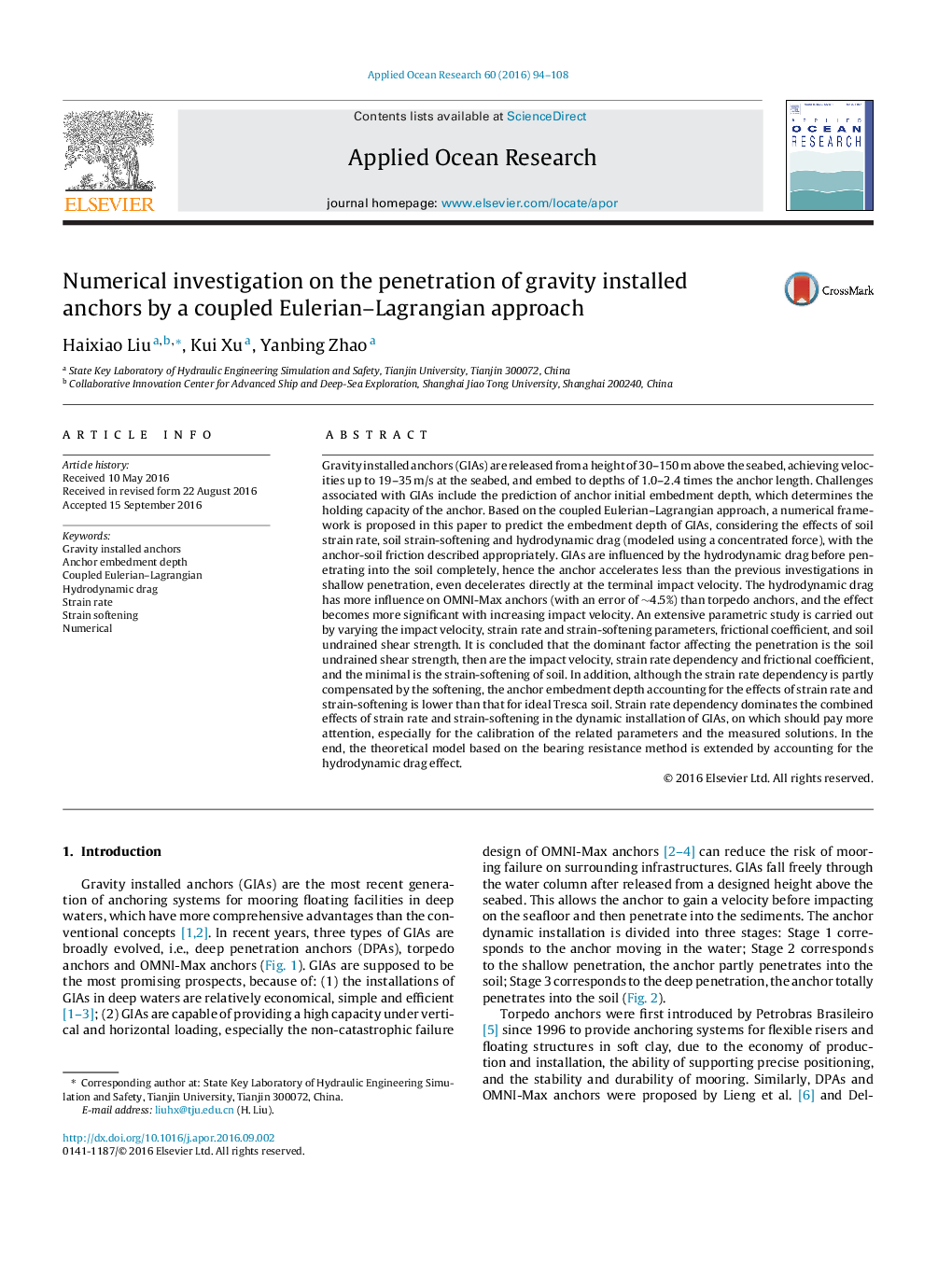| Article ID | Journal | Published Year | Pages | File Type |
|---|---|---|---|---|
| 8059370 | Applied Ocean Research | 2016 | 15 Pages |
Abstract
Gravity installed anchors (GIAs) are released from a height of 30-150Â m above the seabed, achieving velocities up to 19-35Â m/s at the seabed, and embed to depths of 1.0-2.4 times the anchor length. Challenges associated with GIAs include the prediction of anchor initial embedment depth, which determines the holding capacity of the anchor. Based on the coupled Eulerian-Lagrangian approach, a numerical framework is proposed in this paper to predict the embedment depth of GIAs, considering the effects of soil strain rate, soil strain-softening and hydrodynamic drag (modeled using a concentrated force), with the anchor-soil friction described appropriately. GIAs are influenced by the hydrodynamic drag before penetrating into the soil completely, hence the anchor accelerates less than the previous investigations in shallow penetration, even decelerates directly at the terminal impact velocity. The hydrodynamic drag has more influence on OMNI-Max anchors (with an error of â¼4.5%) than torpedo anchors, and the effect becomes more significant with increasing impact velocity. An extensive parametric study is carried out by varying the impact velocity, strain rate and strain-softening parameters, frictional coefficient, and soil undrained shear strength. It is concluded that the dominant factor affecting the penetration is the soil undrained shear strength, then are the impact velocity, strain rate dependency and frictional coefficient, and the minimal is the strain-softening of soil. In addition, although the strain rate dependency is partly compensated by the softening, the anchor embedment depth accounting for the effects of strain rate and strain-softening is lower than that for ideal Tresca soil. Strain rate dependency dominates the combined effects of strain rate and strain-softening in the dynamic installation of GIAs, on which should pay more attention, especially for the calibration of the related parameters and the measured solutions. In the end, the theoretical model based on the bearing resistance method is extended by accounting for the hydrodynamic drag effect.
Related Topics
Physical Sciences and Engineering
Engineering
Ocean Engineering
Authors
Haixiao Liu, Kui Xu, Yanbing Zhao,
